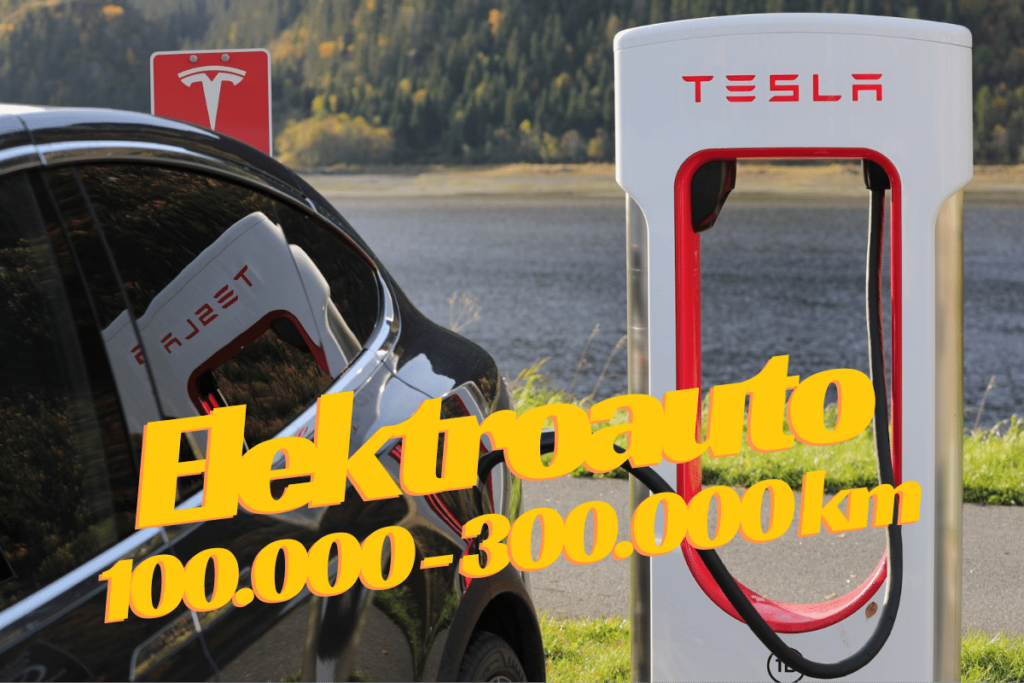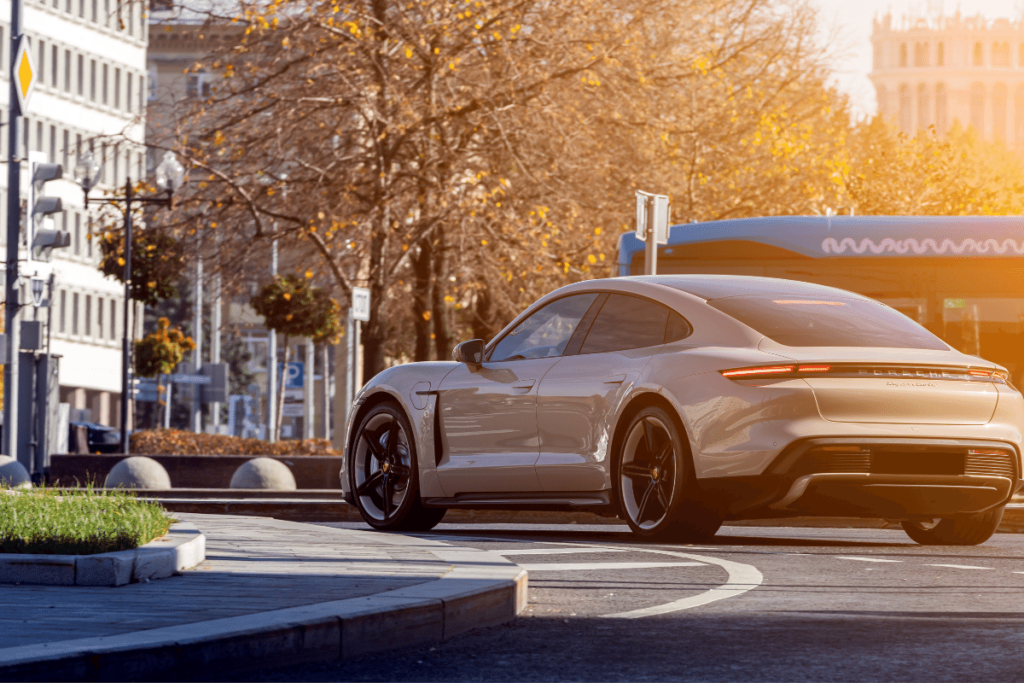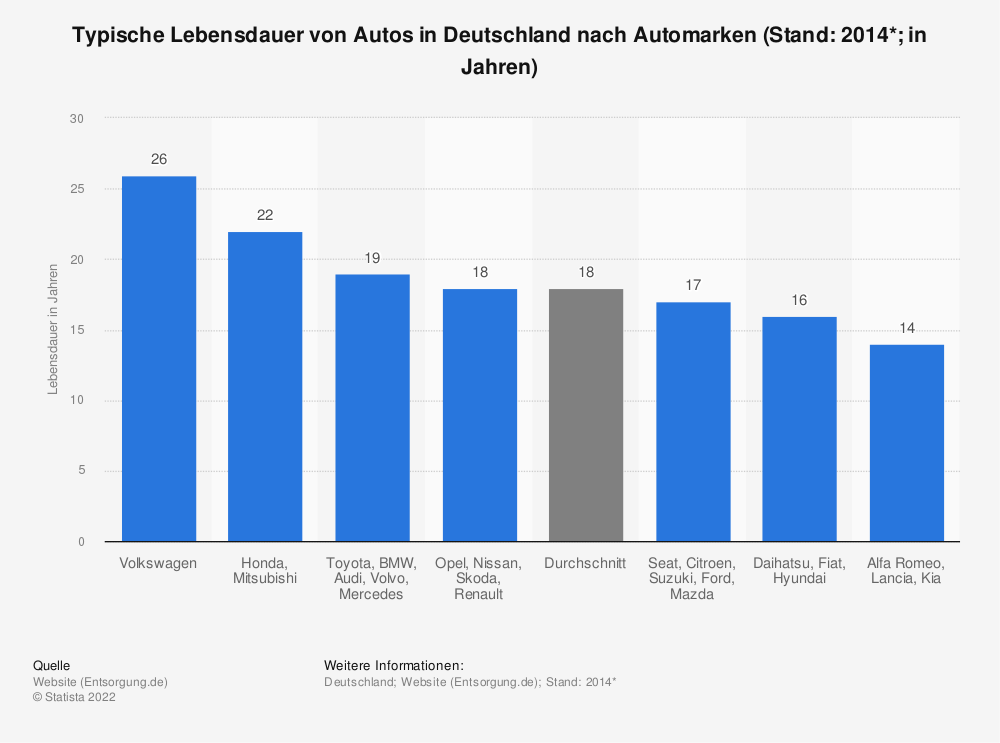The mileage of a vehicle is a key indicator of its value and condition. This is because mileage indicates how many kilometers the car has covered since it was manufactured and is therefore an important factor in assessing the vehicle. In the car leasing and financing sector, mileage plays a crucial role in determining the total number of kilometers a vehicle is allowed to cover during the contract period. High mileage can increase the risk for the lessor, as it indicates that the vehicle has been used frequently and thus shows greater wear and tear.
What is the mileage on the car?
What you can learn here
- What is the mileage on the car?
- Importance of mileage in the car
- Which is more important: mileage or age?
- Mileage as a basis in the kilometer contract
- Average mileage by car
- How many km does a car run?
- Which car is indestructible?
- Mileage motorcycle compared to car
- How much mileage does a used car usually get?
Mileage is the number of kilometers a vehicle has traveled or will travel. It is usually expressed in kilometers per year and is an important factor in assessing the condition of a vehicle.
Importance of mileage in the car
The mileage of a car is an important factor to consider when making a purchase decision. It provides information about the condition of the vehicle and can be an indicator of the expected life of the car. High mileage can also be an indication of higher maintenance intensity needed to keep the car in good condition.
But, have you ever thought about the fact that the Mileage not the only purchase criterion should be? Sure, if you like a car and the mileage isn't too high, that's great! But keep in mind that the mileage only shows how far the car has been driven in total.
The mileage of a car says nothing about whether the motor vehicle has been driven over longer distances or in city traffic. Here, the driving profile has a strong influence on wear. For example, the clutch is much more heavily loaded on urban routes than on the highway. Short trips also damage the engine, which often runs cold. For this reason, mileage alone is not enough of a criterion for evaluating a used car. Also pay attention to Interior, the state and sound of the Motors, the Body and the Service booklet.
Nevertheless, the mileage has its justification as an important purchase criterion, because it can be said that cars with higher mileage have more frequent problems with wear parts compared to cars with lower mileage.
Which is more important: mileage or age?
When it comes to a decision between a younger car with higher mileage and an older car with lower mileage, DEKRA advises to go for the older Car with less kilometers. For this purpose, they examined 15 million vehicles.
DEKRA's finding: mileage calls for more expensive defects than the age of the vehicle. The danger is that particularly cost-intensive defects such as worn-out bearings are more related to mileage than to age. Defects typical of old age, such as brittle seals, on the other hand, are cheaper to repair and therefore usually not as serious.
DEKRA thus comes to the clear conclusion that low mileage is more important than low age when buying a used car.
If you have one Car loan without Schufa you should therefore place value on a lower running line so that you don't end up with an expensive repair shop bill in the near future.
Nevertheless, this finding - whether mileage or age is more important - is controversial among car experts. After all, mileage is often not enough as the sole criterion. It is also important how and where the car was driven: Were the kilometers on the Long distance or the short distance in the city? A Service booklet gives information about maintenance on the vehicle and an assessment of interior, Body and engine allows conclusions to be drawn about driving style and care of the car. Garage vehicles are also better protected from scratches and rust than cars outdoors.
Mileage as a basis in the Mileage contract
A mileage contract is a contract that specifies the mileage of a vehicle. The contract provides for a certain number of kilometers per year that the vehicle may travel. In rarer cases, the contract provides for a certain number of kilometers per month. For this purpose the wording Mileage p.a., meaning term per annum, i.e. term per year means.
If the mileage p.a. is not reached, the lessee often receives money back. If, on the other hand, the mileage is exceeded, the lessee must pay an additional fee for wear and tear on the vehicle for the excess mileage.
Average mileage by car
The average total mileage of a passenger car is about 300,000 kilometers and depends on engine capacity, fuel, supercharging, processing and care of the engine. Cheaper engines in small cars, for example, tend to achieve only 200,000 km. In general, diesel engines in particular often have a longer service life. In addition, engines with a larger displacement often also achieve a higher mileage because they rotate at a lower speed and therefore wear less. Non-supercharged naturally aspirated engines are more durable than supercharged engines. After all, the lack of a supercharger means they are less stressed at lower speeds.
Diesel engine mileage: How long does a diesel run?

The higher efficiency, lower engine speeds and larger displacement of the diesel engine mean more power and longer durability. Truck engines, for example, can reach over 1 million kilometers, while passenger car diesel engines can reach a mileage of over 500,000 kilometers. Realistic diesel engine mileages range from 250,000 km to 350,000 km.
Diesel engines have slightly more displacement than gasoline engines with the same power output. In addition, high torque is already available at low speeds in diesel engines. This results in lower engine speeds and thus low-wear operation. Nowadays, this effect is partially compensated for by powerful turbocharging. Nevertheless, diesel engines run at lower speeds and thus protect the engine.
Another effect that has a positive impact on the mileage of the diesel engine is that diesel vehicles are mostly long-distance cars. After all, diesel cars only pay for themselves from around 15,000 km a year, and are therefore popular with commuters on longer highway journeys. On long journeys, the engine runs at optimum operating temperature, unlike on short journeys, which is why it is better lubricated.
Gasoline mileage: How long does the gasoline engine car run in comparison?

Diesel and gasoline engines have converged overall in terms of mileage. This is because modern gasoline engines also run for 200,000 km. Although this is slightly less long on average than a diesel engine runs, the mileage is also strongly influenced by care, maintenance and car brand.
As the mileage of diesel and gasoline engines have become more and more equalized, when buying a used car, you should also consider factors such as the condition of the vehicle, the cost of purchase and maintenance, insurance, fuel prices, consumption and taxes look to make a decision on the type of drive.
Electric car mileage: How long does the electric car run?

In electric cars, it is not the engine that is the limiting element, but the battery. Here, one expects a service life of eight to ten years and about 1,000 charging cycles for electric cars. With an average range of 100 kilometers per charge, this results in a mileage of approximately 100,000 kilometers. However, a modern lithium-ion battery can withstand up to 3,000 charging cycles. The new Tesla S can therefore cover up to 200,000 km with this battery technology.
At the end of the battery's service life in the electric car, the remaining capacity has dropped to about 70 %. Although there is no need to worry about being stranded, the range and efficiency of the battery are noticeably reduced.
The ADAC has summarized the ranges of electric cars in the following table:
| Manufacturer | Model | Warranty period | Minimum capacity | Possible warranty exclusions |
|---|---|---|---|---|
| Aiways | U5 | 8 years / 150,000 km | 75% | n.b. |
| Audi | all | 8 years / 160,000 km | 70% | none |
| Audi | Q4 | in clarification | in clarification | in clarification |
| BMW | all | 8 years / 160,000 km | 70% | If notes in the operating instructions (BA) on downtimes have been disregarded |
| Citroen/DS | all new models | 8 years / 160,000 km | 70% | n.a. |
| Citroen/DS | C-Zero, Berlingo (B9) | 8 years / 100,000 km | 70% | n.a. |
| Fiat | 500e (42 kWh) | 8 years / 160,000 km | 70% | in case of deep discharge and SW updates not performed |
| Fiat | 500e (23 kWh) | 8 years / 100,000 km | 70% | in case of deep discharge and SW updates not performed |
| Ford | Mach-e | 8 years / 160,000 km | n.b. | n.b. |
| Honda | e | 8 years / 160,000 km | n.b. | n.b. |
| Hyundai | Kona electric, Ioniq 5 | 8 years / 160,000 km | 70% | none |
| Hyundai | Ioniq electric | 8 years / 200,000 km | 70% | none |
| Jaguar | i-Pace | 8 years / 100,000 km | 70% | n.b. |
| Kia | all | 7 years / 150,000 km | 70% | none |
| Lexus | UX300e | 10 years / 1 million km | 70% | n.b. |
| Mazda | MX-30 | 8 years / 160,000 km | 70% | no |
| Mercedes-Benz | EQC, EQA, EQB, EQC | 8 years / 160,000 km | 70% | n.a. |
| Mercedes-Benz | EQS | 10 years / 250,000 km | 70% | n.a. |
| Mini | Mini SE | 8 years / 160,000 km | 70% | n.b. |
| Nissan | all | 5 years / 100,000 km for material and workmanship | 9 of 12 bars in the vehicle display | for deep discharge |
| Nissan | all | 8 years / 160,000 km against capacity loss | 9 of 12 bars in the vehicle display | for deep discharge |
| Opel | all new models | 8 years / 160,000 km | 70% | in case of deep discharge and SW updates not performed |
| Opel | Ampera-e | 8 years / 160,000 km | 60% | in case of deep discharge and SW updates not performed |
| Peugeot | all new models | 8 years / 160,000 km | 70% | n.a. |
| Peugeot | iOn | 8 years / 100,000 km | 70% | n.a. |
| Polestar | Polestar 2 | 8 years / 160,000 km | n.b. | n.b. |
| Porsche | Taycan | 3 years / 60,000 km | 80% | If notes in the BA on standing times were disregarded |
| Porsche | Taycan | 8 years / 160,000 km | 70% | If notes in the BA on standing times were disregarded |
| Renault | Zoe, Twingo | 8 years / 160,000 km | 70% | none |
| Renault | Kangoo | 5 years / 100,000 km | 66% | none |
| Seat | all | 8 years / 160,000 km | 70% | none |
| Skoda | all | 8 years / 160,000 km | 70% | none |
| Smart | all | 8 years / 100,000 km | 70% | n.a. |
| Tesla | Model 3 SR+ | 8 years / 160,000 km | 70% | if SW updates have not been performed |
| Tesla | Model 3 LR, Performance | 8 years / 200,000 km | 70% | if SW updates have not been performed |
| Tesla | Model S/X | 8 years / 240,000 km | 70% | if SW updates have not been performed |
| Toyota | bz4x | 8 years / 160,000 km | n.b. | n.b. |
| VW | all | 8 years / 160,000 km | 70% | no |
| Volvo | all | 8 years / 160,000 km | 70% | no |
Which cars last the longest?
High-volume diesel engines are still the most durable. After all, with good care, diesel engine mileages of over 300,000 km are not uncommon. But electric cars are catching up. Toyota's first all-electric Lexus 300e comes with a warranty of 1 million km on the battery.
However, the warranty is limited to 10 years, so we would have to drive 100,000 km a year to reach the mileage within the warranty period. Specifically, Toyota guarantees that within the warranty period, the battery capacity will be not less than 70 percent will decrease. The prerequisite is that the customer complies with the maintenance intervals. The electric car has never had so much warranty on the vehicle's battery. This leads to the conclusion that, as battery technology advances, electric cars will soon replace diesel as the indestructible car.
How many km does a car run?
How many kilometers are a lot for a car depends on the car and its previous owner. This is because sedans with diesel engines are typical vehicles for long-distance driving with little wear and tear. A mileage of 150,000 km is therefore not a problem for these cars. For small cars with gasoline engines, on the other hand, 150,000 km should be regarded as critical. This is because small cars are usually only driven short distances with a cold engine, which means that the engine is damaged much more quickly. In addition, the workmanship of the less expensive small cars is inferior. If you value a long-lasting small car, you should take a look at the best small car at 1,000 euros net or 1500 Euro net monthly in the linked articles by all means.
Is 100,000 km a lot for a car?
No, 100,000 kilometers is not really a special mileage for a car. Both vehicles with gasoline and diesel engines achieve this mileage without any problems. Only some electric cars have already dropped to 70 % of their remaining capacity by the time they reach 100,000 km mileage. These include the e-cars from: Kia, Citroen/DS, the Fiat 500e, the Jaguar i-Pace, the Peugeot iOn, and the Smart. Even the expensive Porsche Taycan has less than 80 % guaranteed remaining capacity in the battery at 100,00 km.

Is 200,000 km a lot for a car?
Most gasoline and diesel cars still crack the 200,000-kilometer mark. However, small cars and heavily turbocharged engines already show clear signs of wear. Most e-cars have also already fallen below the 70 % capacity limit at 200,000 km. Only the Mercedes-Benz EQS and the Lexus UX300e reach more than 200,000 km with over 70 % guaranteed remaining capacity in the battery.
Can you buy a car with 300,000 km?
On car portals, you can always find cars with more than 300,000 km. Reliable vehicles like the Mercedes E-Class or the Volvo V70 can already last that long. However, buying a car with 300,000 km and more is associated with a significant risk, as you do not know the car's history. Moreover, with 300,000 km and more, unexpected defects can suddenly occur.
For cars with 300,000 km and more, the following points are important to minimize the risk somewhat
- It should be a vehicle that had performed well in the Dekra Used Car Report (e.g. Mercedes-Benz E-Class or Volvo V70)
- Diesel are usually more durable
- The number of previous owners should be low
- When were wear parts such as brakes or clutch last replaced?
- What do critical rust spots like door edges look like?
- Is the car accident-free and can this be confirmed by a paint test?
- What does the engine oil look like? - Are there traces of water visible here, or just oil?
What cars can do 400,000 km?
The comparison search engine AutoUncle has analyzed several vehicles and found the following cars with more than 400,000 km on average in the databases of car exchanges: Ford Fiesta, VW Bulli T3, VW Golf II and the Mercedes models B180, 230, 300 and W123. But also that Toyota LandCruiser managed more than 400,000 kilometers on average. Considering the tough operating profile of off-road vehicles, this is a very special feat of Japanese engineering.

Which car is indestructible?
When unbreakable or everlasting are considered indestructible cars with more than 22 years typical service life. According to a study by Entsorgung.de, cars from the brands: Volkswagen, Honda and Mitsubishi are thus indestructible. These cars last between 22 and 26 years. However, the Toyota LandCruiser and the Golf II also last forever. According to AutoUncle, many cars of these models are still sold with more than 300,000 km. But modern cars from VW also last 26 years, almost twice as long as cars from Alfa Romeo, Lancia and Kia, which only last 14 years.
Toyota, BMW, Audi, Mercedes, Volvo, Opel, Nissan, Skoda and Reanault cars typically last 18 to 19 years. This means that they cannot keep up with the top group, but they at least achieve an average service life of 18 years. The Seat, Citroen, Suzuki, Ford, Mazda, Daihatsu, Fiat and Hyundai brands have a slightly below-average service life, lasting 16 to 17 years.

Mileage motorcycle compared to car

Used motorcycles with more than 100,000 kilometers are often still sold today, because your maximum mileage is often not yet reached. If the motorcycle has a low-wear cardan drive, mileages of over 200,000 km are also possible. This means that high-quality touring motorcycles have comparable mileages to a car. Compared to the chain, the expensive cardan drive is low-maintenance except for occasional oil changes. However, the massive cardan drive is somewhat heavier than a chain, which comes at the expense of driving performance. Which (less known) possibilities of the Motorcycle financing you can read in the linked article.
How much mileage does a used car usually get?
A five-year-old used car with a gasoline engine should have an average mileage of 60,000 KM. A five-year-old diesel should have covered about 100,000 km. You can find more average mileage of used cars in the table. The annual mileage in kilometers comes from a study prepared by Statista, which is linked below the chart.
| Annual mileage in KM | 1 year old used car | 3 years old used car | 5 years old used car | 7 years old used car | |
|---|---|---|---|---|---|
| Average mileage used cars total | 14,610 km | 15.000 km | 45.000 km | 75.000 km | 105.000 km |
| Average mileage used car, previous owner: man | 15,740 km | 16.000 km | 48.000 km | 80.000 km | 112.000 km |
| Average mileage used car, previous owner: woman | 13,060 km | 13,000 km | 39.000 km | 65.000 km | 91.000 km |
| Average mileage used cars with gasoline engine | 12,050 km | 12.000 km | 36.000 km | 60.000 km | 84.000 km |
| Average mileage used cars with diesel engine | 19,700 km | 20.000 km | 60.000 km | 100.000 km | 14.000 km |
| Average mileage used cars, previous owner from small town <20,000 km population | 16,110 km | 16.000 km | 48.000 km | 80.000 km | 112.000 km |
| Average mileage used cars, previous owner from major city >500,000 km inhabitants | 12,790 km | 13,000 km | 39.000 km | 65.000 km | 91.000 km |
A mileage between 10,000 km to 20,000 km per year is normal for the car
An annual mileage of 10,000 to 20,000 kilometers per year can be considered normal. However, there are differences in Men and women and for the drive between a Gasoline (petrol) and diesel engine. Men drove 1,460 kilometers more than women in 2020. However, the picture is even clearer when it comes to the drive system. While cars with Diesel engine annually almost 20,000 km back, cars with Gasoline engine only about 12,000 km driven. In 2019, a diesel car was thus driven 7,650 km more than a gasoline car. In 2020, the difference was smaller, as many commuters were relegated to home offices. In addition, residents in large cities drive about 3,300 km less per year than residents in small towns.

diesel, male, Small town are factors that increase the average mileage in the car
In other words, a 5 years old used car average mileage higher than 60,000 km, if:
- the previous owner male was
- the car a Diesel engine Has
- The previous owner in a Small town lives
Low mileage on the car: beware of speedometer manipulation
Now that you know what mileage is common on a car, you should still not make a snap judgment.After all, mileage is only one of many criteria on a car. Car purchase on installments. Therefore, do not be fooled by a low mileage and look at the Car thoroughly onto avoid any tachometer manipulation.
Also important are the condition of the Interior, of the Motors, the Body and the Service booklet. This gives you a better overall picture of the condition of the car. You can see if it has been well maintained and serviced according to the manufacturer's recommendations.




